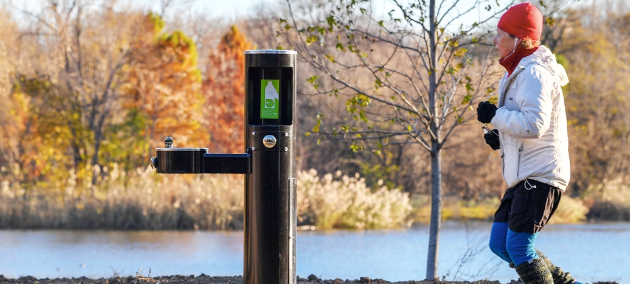New York City Mayor Eric Adams on Saturday issued a citywide drought watch amid a historic lack of precipitation.
The mayor ordered city agencies to update water conservation plans and prepare to implement them, and urged the public to help conserve every drop possible, according to a press release.
The announcement comes after a historically dry October, which saw the second-longest dry streak in city records dating back to 1869.
“New Yorkers come together in times of crisis, and right now, amidst the dryest spell in recent memory, we need New Yorkers to do just that and conserve as much water as possible,” said Adams. “By starting to save water now, we’re doing everything we can to make sure that we can water our parks and fill our pools come summer and to stave off a more serious drought emergency.”
A drought watch is the first of three levels of water conservation declarations by the city. As conditions continue to evolve, the city may declare a drought warning or, subsequently, a drought emergency, which involve escalating requirements to reduce water usage at city agencies and on New Yorkers.
Some tips from the city include:
- Report open fire hydrants and street leaks to 311. An open hydrant can release more than 1,000 gallons per minute, which wastes 1.4 million gallons of drinking water in a 24-hour cycle.
- Don't flush the toilet unnecessarily. According to the EPA, toilets are by far the main source of water use in a home, accounting for nearly 30% of an average home's indoor water consumption. Each flush can use 1.6 gallons, with older models using as much as 6 gallons.
- Take shorter showers, saving five to seven gallons a minute. When taking a bath, fill the tub only halfway and save 10 to 15 gallons.
- Don't run the tap while shaving, washing hands or brushing teeth. Faucets use two to three gallons per minute.
- Fix leaks. A leaky faucet that drips at the rate of one drip per second can waste more than 3,000 gallons per year, according to the U.S. Environmental Protection Agency.
- Run the dishwasher and washing machine only when full. Use short cycles if available. Turn off the water while washing dishes.
- Install water-saving fixtures, including low-flow toilets, showerheads and faucet aerators.
- Sweep driveways and sidewalks clean rather than washing them down with a hose.
- For even more ideas, visit DEP's Water Savings Tips website.
New York City’s average daily water demand decreased by approximately 35% over the past several decades. During its peak in 1979, the city’s average water usage was 1.5 billion gallons of water a day. Thanks to improved management strategies — systemwide leak detection and repairs, replacing old meters with automated meter readers, and providing an online platform for customers to track and monitor water use and quickly detect leaks in their buildings — the city now uses just 1.1 billion gallons a day on average, and under 1 billion gallons during the winter months.




